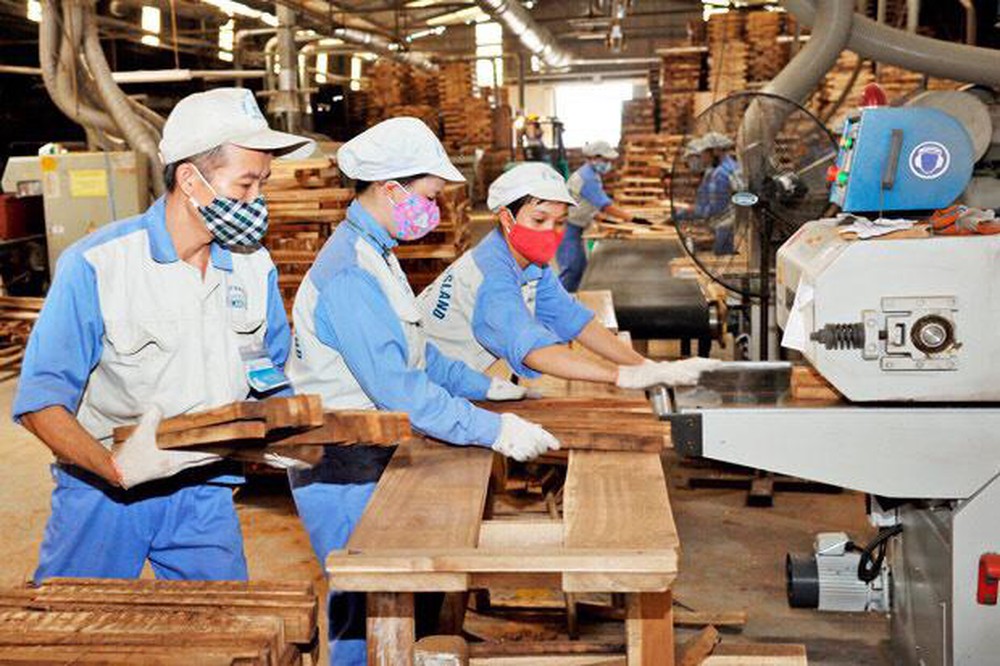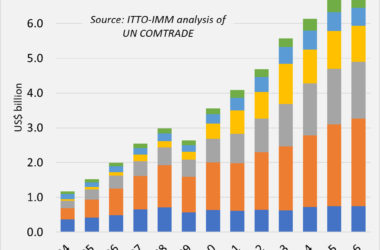Binh Dinh is considered one of the third biggest centres of woodwork production and export industry in the country, with 110 companies participating in the industry.
The whole province now has over 110 export wood processing enterprises with total processing capacity of 300,000 cubic metres of refined timber per year and 500,000 tonnes of wood chips for export per annum. The woodwork industry accounts for up to 60.3 per cent of the province’s total export value. Wood-made products, mainly produced by outdoor wood producers, have been exported to more than 55 countries and territories, including big markets such as EU, Taiwan, Singapore, South Korea, and Japan, attracting nearly 30,000 labourers.
The wood processing industry of Binh Dinh has seen many large-scaled wood processing enterprises with intensive investment in infrastructure, technology equipment, product diversification as well as human resources, such as PISICO, Quoc Thang Company, Tien Dat Co., Phu Tai Co., in their effort to increase the competitiveness. Many enterprises in the province have also take initiative in renting land inside and outside the country to develop their own material area for production; gradually reducing natural timber materials by planted timber, and importing raw materials for active production.
However, at this time the wood processing industry of Binh Dinh has to face a lot of difficulties which derive from both subjective and objective reasons. First of all, there are financial challenges. Over the past time, local commercial banks have cut down their credit limit by 30 – 50 per cent, even up to 70 per cent compared to the initial limit set since the beginning of this year for commercial banks in the province.
The second largest challenge is material source because many enterprises currently can not take initiative in supply of materials, so they are passive in the production and business activities. The third largest difficulty is that although woodwork processors have spent a large amount of capital to diversify product designs, these designs are generally monotonous, and many products are not really attractive to consumers, particularly export markets.
In order to solve difficulties for enterprises in the field of wood processing for a sustainable development, many measures have been suggested. The Department of Agriculture and Rural Development of Binh Dinh Province has conducted a meeting to discuss unification and solutions to remove difficulties for businesses to report the Ministry of Agriculture and Rural Development and the government. The meeting has come up with some solutions as well as recommendations to solve problems face by wood processing industry such as: planning of forest plantation land, materials reforestation, mechanisms and procedures for land transfer to enterprises involved in forest plantation.
The government is suggested to support the Forest Products Association of Binh Dinh to establish a centre of wood raw material import and supply; create favourable conditions for enterprises to access capital for business, investment and production by offering the same lending services for wood producers and processors as tra and basa catfish companies in the south. Mechanisms on lending, interest rates and exchange rate should be loosened to facilitate export. The government should also help train human resource for woodwork businesses; make reform on administrative procedures relating to export and import, timber origin, forest management, and customs inspection. In terms of trade promotion, a trademark of Vietnam timber and Binh Dinh timber should be built, and information on trade barriers, anti-dumping tax for the timber industry should be provided.
These are essential effort; however, the most important is the effort of enterprises. Wood businesses in Binh Dinh should pay attention to improving and advancing technology and processing equipment, changing the structure of products to match with the market, and intensifying corporate governance.
Source: Q.H


































